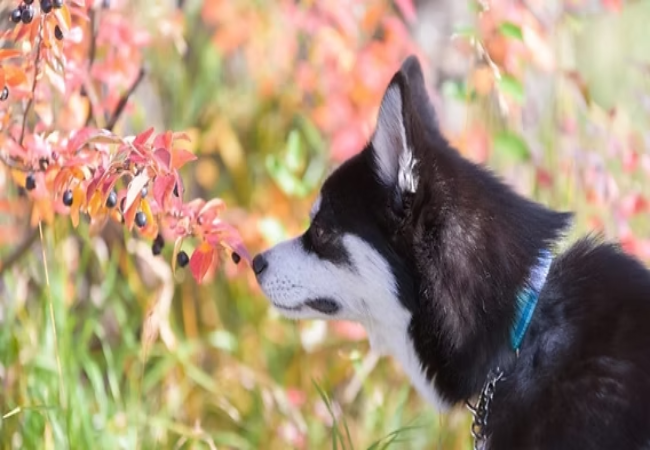Vet Approved Guide: Poisonous Flowers for Dogs – What to Watch Out for in 2025🩺🐶

In this article
Vet Approved Guide: Poisonous Flowers for Dogs – What to Watch Out for in 2025🩺🐶
By Dr. Duncan Houston BVSc
We all love a colorful, blooming garden—but did you know many common flowers can be toxic to your dog? 🌷🐶 As a veterinarian, I’ve treated dogs for everything from mild vomiting to serious heart issues caused by plant exposure. Understanding which flowers pose a risk helps keep your pup safe and your garden pet-friendly. 🐾🩺
This guide details the most common toxic flowers for dogs, symptoms of ingestion, and what to do in an emergency—with added support from Ask A Vet. 🌿
🚨 Top Poisonous Flowers for Dogs
1. 🌸 Hydrangea
- 🌿 Toxin: Cyanogenic glycosides
- ⚠️ Symptoms: Vomiting, diarrhea, lethargy, potential seizures
- 🧪 Risk: Moderate
2. 💐 Lilies (especially daylilies and tiger lilies)
- 🌿 Toxin: Unknown exact agent—extremely toxic to cats, mildly toxic to dogs
- ⚠️ Symptoms: Vomiting, depression, appetite loss
- 🧪 Risk: Low to moderate (more dangerous to cats)
3. 🌷 Tulips
- 🌿 Toxin: Tulipalin A and B (especially in bulbs)
- ⚠️ Symptoms: Drooling, nausea, vomiting, depression
- 🧪 Risk: Moderate (bulbs most toxic)
4. 🌺 Azaleas (Rhododendron spp.)
- 🌿 Toxin: Grayanotoxins
- ⚠️ Symptoms: Vomiting, diarrhea, weakness, cardiac failure
- 🧪 Risk: High
5. 🌸 Oleander
- 🌿 Toxin: Cardiac glycosides
- ⚠️ Symptoms: Drooling, nausea, heart arrhythmias, death
- 🧪 Risk: Extreme—can be fatal
6. 🌼 Daffodils (Narcissus spp.)
- 🌿 Toxin: Lycorine and calcium oxalates
- ⚠️ Symptoms: Drooling, vomiting, tremors, cardiac irregularities
- 🧪 Risk: High—bulbs especially dangerous
7. 🌿 Foxglove
- 🌿 Toxin: Digitalis glycosides
- ⚠️ Symptoms: Vomiting, irregular heart rhythm, collapse
- 🧪 Risk: Extreme—potentially fatal
8. 🌺 Chrysanthemums
- 🌿 Toxin: Pyrethrins
- ⚠️ Symptoms: Vomiting, diarrhea, drooling, skin irritation
- 🧪 Risk: Moderate
9. 🪻 Larkspur (Delphinium)
- 🌿 Toxin: Alkaloids
- ⚠️ Symptoms: Muscle tremors, stiffness, paralysis
- 🧪 Risk: High—especially dangerous to puppies
10. 🌺 Sago Palm (often used ornamentally with flowers)
- 🌿 Toxin: Cycasin
- ⚠️ Symptoms: Vomiting, seizures, liver failure, death
- 🧪 Risk: Extreme—high fatality rate
📋 Symptoms of Flower Toxicity in Dogs
- 🤮 Vomiting or diarrhea
- 🧠 Tremors or seizures
- 🫁 Difficulty breathing
- 💔 Irregular heartbeat
- 🛌 Weakness or collapse
These signs can appear within 15 minutes or several hours depending on the toxin. Don’t wait—use Ask A Vet or contact emergency care. 🩺
🧠 What To Do If Your Dog Eats a Poisonous Flower
1. 🚫 Remove any leftover plant material from your dog’s mouth
2. 📞 Contact Ask A Vet or a pet poison hotline immediately
3. 🏥 Go to the vet if advised—bring the plant (or photo) with you
Veterinary Treatment May Include:
- 💉 Induced vomiting (if recent ingestion)
- 🧪 Activated charcoal
- 💧 IV fluids and medication for heart or neurological symptoms
🌿 Safe Gardening Tips for Dog Owners
1. 🪴 Use Only Pet-Safe Plants
- 🌻 Marigolds, snapdragons, zinnias, sunflowers
2. 🌱 Block Access to Hazardous Areas
- 🪵 Use raised planters, garden fencing, or indoor barriers
✅ Final Thoughts: Know What’s Growing in Your Garden
Many flowers add beauty—but also danger. Knowing what to plant, how to prevent exposure, and what to do in an emergency gives you the tools to enjoy your garden with peace of mind. 🌼🐕
Quick Recap:
- 🚫 Avoid hydrangeas, lilies, tulips, azaleas, oleander, and daffodils
- 📱 Use Ask A Vet for fast toxin support
Need fast advice? Visit AskAVet.com. 🐾🌷






